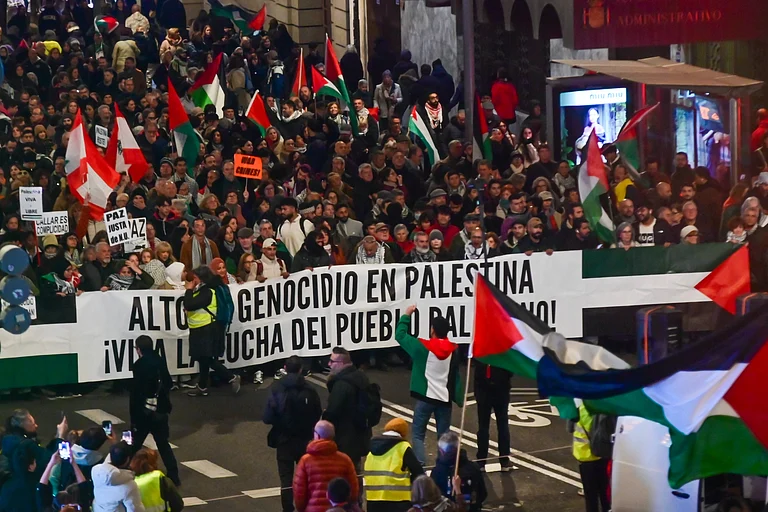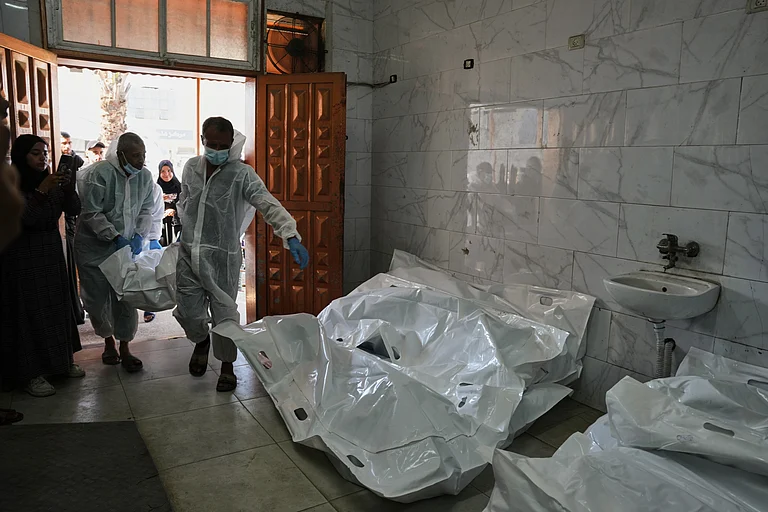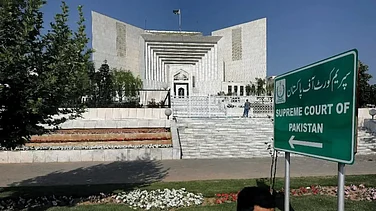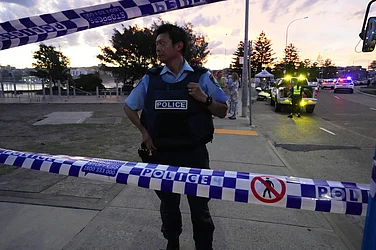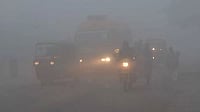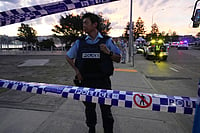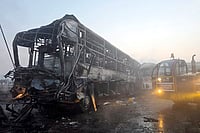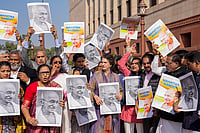
Dozens of displaced Palestinians live in a Khan Younis cemetery after their homes were destroyed.
Families say they face fear and hardship among the graves with little chance to return home.
The Gaza death toll has risen above 68,800 as recovery continues after the ceasefire.
In the southern Gaza city of Khan Younis, displaced Palestinians have turned cemeteries into makeshift shelters after months of war left much of the territory in ruins. Gravestones now serve as seats and tables for families like that of Maisa Brikah, who has lived with her children in a sun-baked burial ground for five months, according to AP. Around 30 families are sheltering in the same cemetery.
A blonde-haired toddler runs fingers through the sand outside one tent, while another child peeks from behind a sheet of fabric. But when night falls, fear replaces daytime activity.
“When the sun goes down, the children get scared and don’t want to go, and I have a few children, four small ones,” Ms Brikah said. “They are afraid to go out because of the dogs at night, and the dead.”
The vast majority of Gaza’s population of more than two million has been displaced by two years of fighting between Hamas and Israel. Some people have gone back to damaged homes during the ceasefire that began on 10 October, while others remain crowded into the few areas not under Israeli control, AP reported.
Among the rows of graves, there are signs of daily life. A prayer rug hangs on a line, a child pushes a water jug balanced on a wheelchair, and smoke rises from a cooking fire.
One of Brikah’s closest neighbours is Ahmad Abu Said, who died in 1991 at the age of 18, according to his tombstone, which begins with verses from the Quran. Living among the dead brings unease, Brikah said, but there is little alternative. Her home in Khan Younis was destroyed and Israeli forces now occupy the area.
Other residents of the cemetery came from northern Gaza, far from the burial places of their own relatives. Mohammed Shmah, who has been living there for three months, said his house was also destroyed.
“I’m a grown man, but I still get scared of the graves at night. I hide in my tent,” he said, sitting on a broken tombstone in the sunlight. He had only 200 shekels, around $60, when a friend helped bring his family to the site.
The lack of money leaves many with no option but to stay. “Of course, life in the cemetery is full of fear, dread and worries, and you don’t sleep in addition to the stress we experience,” said Hanan Shmah, Mohammed’s wife, as she washed dishes carefully in a small container, conserving water.
There is no assurance of safety even here. AP reported that Israeli forces have struck cemeteries during the war, saying Hamas used some as cover. Israel argues such sites lose their protection when used for military purposes.
During the conflict, bodies were buried wherever possible, including in hospital courtyards. Palestinian custom calls for burial near family, but fighting has disrupted those traditions. Now, with the ceasefire, efforts have turned to locating the dead.
Israel is pressing Hamas to return the remains of hostages, while Palestinian health officials post photos of bodies returned by Israel for identification. Others search through rubble for those missing for months.
The death toll in Gaza, now over 68,800, has risen since the ceasefire began, largely from the recovery of remains, AP reported.
In the Khan Younis cemetery, families witness new burials almost daily, many marked only by sand and stones. For residents like the Shmah and Brikah families, the future remains uncertain.
“After the ceasefire, my life is the same inside the cemetery, meaning I gained nothing,” said Mohammed Shmah.
(With inputs from AP)









